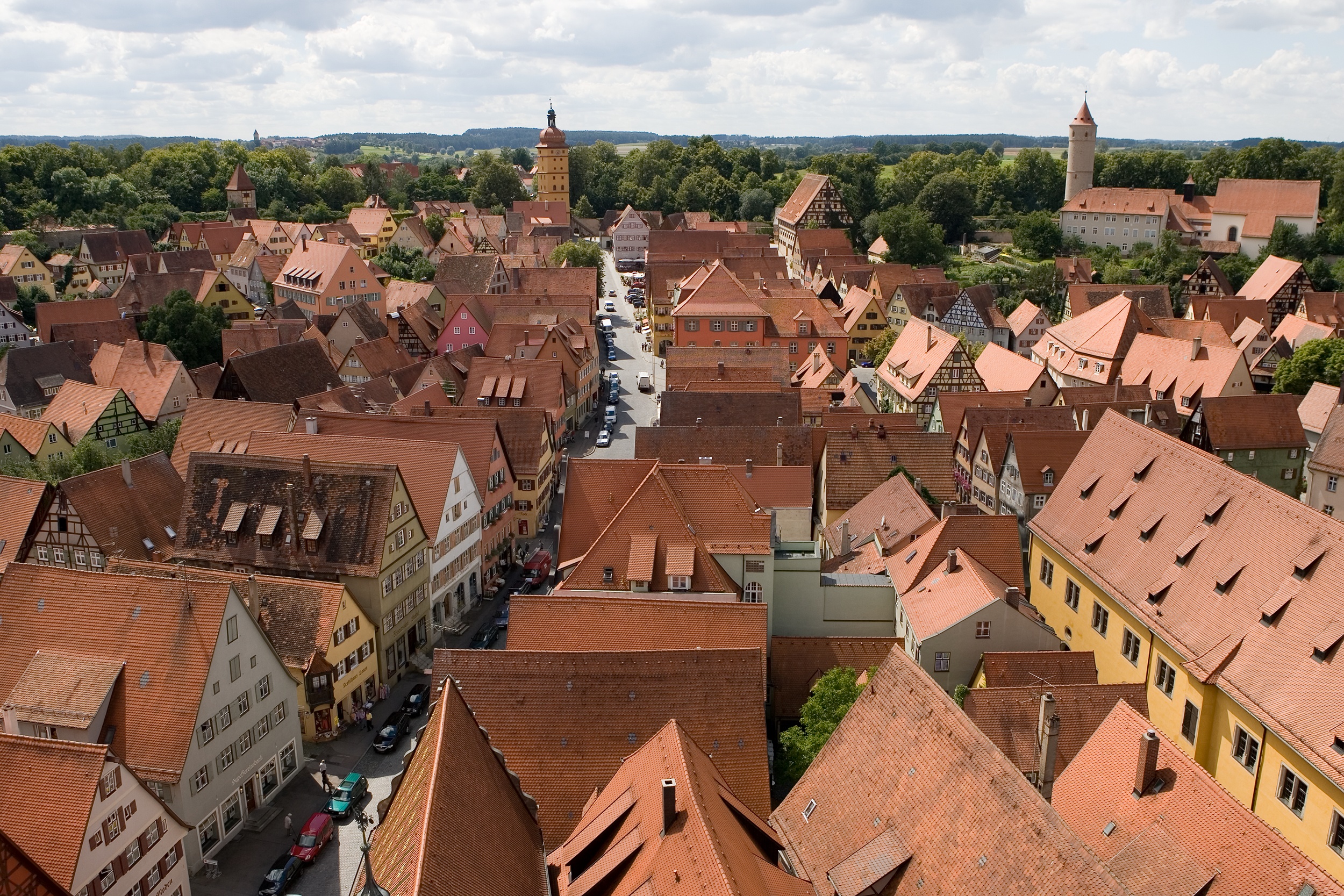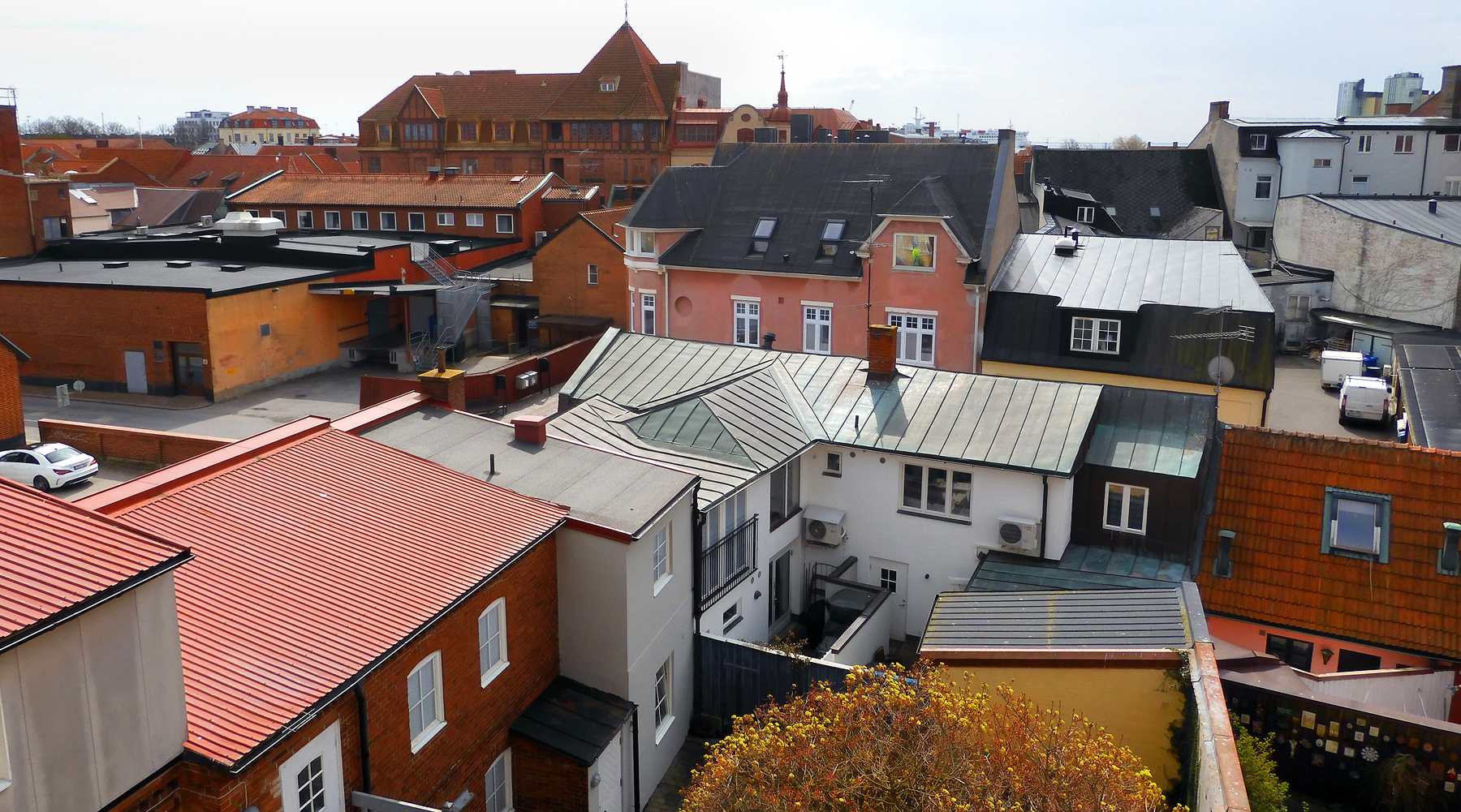|
Onigawara
are a type of roof ornamentation found in Japanese architecture. They are generally roof tiles or statues depicting an ''oni'' (ogre) or a fearsome beast. ''Onigawara'' were historically found on Buddhist temples, but are now used in many traditionally styled buildings. Some tiles may depict things besides ''oni'', but are still called ''onigawara'' due to custom. History Prior to the Heian period, similar ornaments with floral and plant designs (''hanagawara'') preceded the ''onigawara''.onigawara 鬼瓦 " JAANUS. Retrieved on June 12, 2009. The present design is thought to have come from a previous architectural element, the '' oni-ita'', which is a board painted with the face of an ''oni'' and was meant to stop roof leaks. During the |
Roof Tiles
Roof tiles are overlapping tiles designed mainly to keep out precipitation such as rain or snow, and are traditionally made from locally available materials such as clay or slate. Later tiles have been made from materials such as concrete, glass, and plastic. Roof tiles can be affixed by screws or nail (fastener), nails, but in some cases historic designs utilize interlocking systems that are self-supporting. Tiles typically cover an List of commercially available roofing materials, underlayment system, which seals the roof against water intrusion. Categories There are numerous profiles, or patterns, of roof tile, which can be separated into categories based on their installation and design. Shingle / flat tiles One of the simplest designs of roof tile, these are simple overlapping slabs installed in the same manner as traditional roof shingle, shingles, usually held in place by nails or screws at their top. All forms of slate tile fall into this category. When installed, mos ... [...More Info...] [...Related Items...] OR: [Wikipedia] [Google] [Baidu] |
List Of Traditional Crafts Of Japan
The is a series of Japanese crafts specially recognized and designated as such by the Ministry of Economy, Trade and Industry, Minister of Economy, Trade and Industry (formerly, the Ministry of International Trade and Industry, Minister of International Trade and Industry) in accordance with the 1974 . As of 17 October 2024, 243 crafts have been so designated. Background As set out in Article 1 of the 1974 Act, the purpose of Traditional Craft industries and their promotion is to enrich the lives of the citizens and, due to their particular geographic nature, contribute to the development of local economies and, thereby, that of the nation as a whole. This economic angle helps distinguish the designation of Traditional Crafts under the 1974 Act from that of traditional crafts as Intangible Cultural Property (Japan), Intangible Cultural Properties under the Cultural Property (Japan)#Present 1950 Law for the Protection of Cultural Properties, 1950 Law for the Protection of Cultural ... [...More Info...] [...Related Items...] OR: [Wikipedia] [Google] [Baidu] |
Gargoyle
In architecture, and specifically Gothic architecture, a gargoyle () is a carved or formed Grotesque (architecture), grotesque with a spout designed to convey water from a roof and away from the side of a building, thereby preventing it from running down masonry walls and eroding the Mortar (masonry), mortar between. Architects often used multiple gargoyles on a building to divide the flow of rainwater off the roof to minimize potential damage from rainstorms. A trough is cut in the back of the gargoyle and rainwater typically exits through the open mouth. Gargoyles are usually elongated fantastical animals because their length determines how far water is directed from the wall. When Gothic art, Gothic flying buttresses were used, aqueduct (watercourse), aqueducts were sometimes cut into the buttress to divert water over the aisle walls. Etymology The term originates from the French language, French ''gargouille'' (Old French ''gargoule'' (1294) "conduit for waterflow"), com ... [...More Info...] [...Related Items...] OR: [Wikipedia] [Google] [Baidu] |
Roofs
A roof (: roofs or rooves) is the top covering of a building, including all materials and constructions necessary to support it on the walls of the building or on uprights, providing protection against rain, snow, sunlight, extremes of temperature, and wind. A roof is part of the building envelope. The characteristics of a roof are dependent upon the purpose of the building that it covers, the available roofing materials and the local traditions of construction and wider concepts of architectural design and practice, and may also be governed by local or national legislation. In most countries, a roof protects primarily against rain. A verandah may be roofed with material that protects against sunlight but admits the other elements. The roof of a garden conservatory protects plants from cold, wind, and rain, but admits light. A roof may also provide additional living space, for example, a roof garden. Etymology Old English 'roof, ceiling, top, summit; heaven, sky', also ... [...More Info...] [...Related Items...] OR: [Wikipedia] [Google] [Baidu] |
Japanese Architectural Features
Japanese may refer to: * Something from or related to Japan, an island country in East Asia * Japanese language, spoken mainly in Japan * Japanese people, the ethnic group that identifies with Japan through ancestry or culture ** Japanese diaspora, Japanese emigrants and their descendants around the world * Japanese citizens, nationals of Japan under Japanese nationality law ** Foreign-born Japanese, naturalized citizens of Japan * Japanese writing system, consisting of kanji and kana * Japanese cuisine, the food and food culture of Japan See also * List of Japanese people * * Japonica (other) * Japanese studies , sometimes known as Japanology in Europe, is a sub-field of area studies or East Asian studies involved in social sciences and humanities research on Japan. It incorporates fields such as the study of Japanese language, history, culture, litera ... {{disambiguation Language and nationality disambiguation pages ... [...More Info...] [...Related Items...] OR: [Wikipedia] [Google] [Baidu] |
Shisa
is a traditional Ryukyuan cultural artifact and decoration derived from Chinese guardian lions, often seen in similar pairs, resembling a cross between a lion and a dog, from Okinawan mythology. Shisa are wards, believed to protect from some evils. People place pairs of shisa on their rooftops or flanking the gates to their houses, with the left shisa traditionally having a closed mouth, the right one an open mouth. The open mouth shisa traditionally wards off evil spirits, and the closed mouth shisa keeps good spirits in. History Like the ''komainu'' ("lion dogs"), the shisa are a variation of the guardian lions from China. From the Edo period, they started to be called "guardian dogs" in general in mainland Japan. Gender is variously assigned to the shisa. Some Okinawans believe the male has his mouth closed to keep bad out of the home, while the female has her mouth open to share goodness. Others believe the female has her mouth closed to "keep in the good", while the mal ... [...More Info...] [...Related Items...] OR: [Wikipedia] [Google] [Baidu] |
Shibi (roof Tile)
is a Chinese and Japanese ornamental tile set on both ends of the ridgepole that tops a shingled roof. The ''kanji'' for the word mean "kite" and "tail" respectively. Because it resembles a shoe, it is sometimes also called a , meaning "shoe shape". ''Shibi'' often take the form of a ''shachihoko A – or simply – is a sea monster in Japanese folklore with the head of a dragon or tiger or lion and the body of a carp covered entirely in black or grey scales.Joya. ''Japan and Things Japanese.'' Taylor and Francis, 2017;2016;, Accordi ...''. See also *'' Shisa'', ceramic lions on roofs or by gates * Chinese roof charms, multiple different species *'' Chiwen'', origin of Shibi in China Japanese architectural features Roof tiles {{japan-art-stub ... [...More Info...] [...Related Items...] OR: [Wikipedia] [Google] [Baidu] |
Shachihoko
A – or simply – is a sea monster in Japanese folklore with the head of a dragon or tiger or lion and the body of a carp covered entirely in black or grey scales.Joya. ''Japan and Things Japanese.'' Taylor and Francis, 2017;2016;, According to the tale, Shachihoko lives in the cold northern ocean. Its broad fins and tail always point up toward heaven, and its dorsal fins have numerous sharp spikes. It can swallow a massive amount of water and hold it in its belly, as well as summon clouds and control the rain.Meyer, Matthew. “Shachihoko.” ''YOKAI.COM'', https://yokai.com/shachihoko/ . Accessed 3 December 2022. Although believed to come from the sea, they are often constructed high on the roof standing upside down. 鯱 is a kokuji character; when pronounced , it can mean " orca". Origins Shachihoko evolved from '' Chiwen'', an animal in the Chinese tale from the Han dynasty (202 BC - 220 AD), and is known as Shibi in Japan. First found in the Eastern Han dynasty po ... [...More Info...] [...Related Items...] OR: [Wikipedia] [Google] [Baidu] |
Jisaburō Ozawa
was an admiral in the Imperial Japanese Navy during World War II. Ozawa held several important commands at sea throughout the duration of the conflict ( Southern Expeditionary Fleet, 3rd Fleet, 1st Mobile Fleet, and the Combined Fleet). Ozawa was noted for his innovative ideas in the employment of aircraft carriers. However, he could not, in his most important commands from 1943 onward, succeed in overcoming the superiority of American carrier aviation. In terms of quantity and quality of aircraft, as well as pilot training and experience, the Americans outmatched the Japanese carrier forces under Ozawa's command. Ozawa commanded Japanese carrier forces during some of the most significant naval battles that took place in the Pacific Theatre: the Battle of the Philippine Sea and the Battle of Leyte Gulf. He was the last Commander-in-Chief of the Combined Fleet. Ozawa has been noted for his unusual height for a Japanese man of his time period, measuring in at over tall, althoug ... [...More Info...] [...Related Items...] OR: [Wikipedia] [Google] [Baidu] |
Imperial Roof Decoration
Chinese imperial roof decorations or roof charms or roof-figures () or "walking beasts" () or "crouching beasts" () were statuettes placed along the ridge line of official buildings of the Chinese empire. Only official buildings (palaces, government buildings, and some temples) were permitted to use such roof decorations. Overview Chinese roofs are typically of the hip roof type, with small gables, so decorations along the ridge line were highly visible to observers. Variant versions are still widespread in Chinese temples and has spread to the rest of East Asia and parts of Southeast Asia. Along the ridges (unions between the roof panels), near the corner, a row of small figures is placed. These are often made of glazed ceramic and form an outward marching procession. Here we see the imperial yellow glaze reserved for the emperor. At the tail of the procession will be an imperial dragon, representing the authority of the state. At the head of the procession will be a man ridi ... [...More Info...] [...Related Items...] OR: [Wikipedia] [Google] [Baidu] |
Chimera (architecture)
In architecture, a grotesque () is a fantastic or mythical figure carved from stone and fixed to the walls or roof of a building. A chimera () is a type of grotesque depicting a mythical combination of multiple animals (sometimes including humans). Grotesque are often called gargoyles, although the term gargoyle refers to figures carved specifically to drain water away from the sides of buildings. In the Middle Ages, the term ''babewyn'' was used to refer to both gargoyles and chimerae. This word is derived from the Italian word , which means "baboon". Grotesques often depict whimsical, mythical creatures in dramatic or humorous ways. They have historically been a key element of architecture in many periods including the Renaissance and Medieval periods and have stylistically developed in conjunction with these times. Although grotesques typically depict a wide range of subjects, they are often hybrids of different mythical, human, and animalistic features. Many scholars descr ... [...More Info...] [...Related Items...] OR: [Wikipedia] [Google] [Baidu] |





